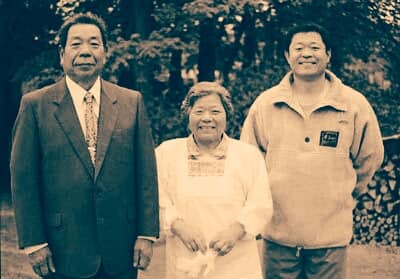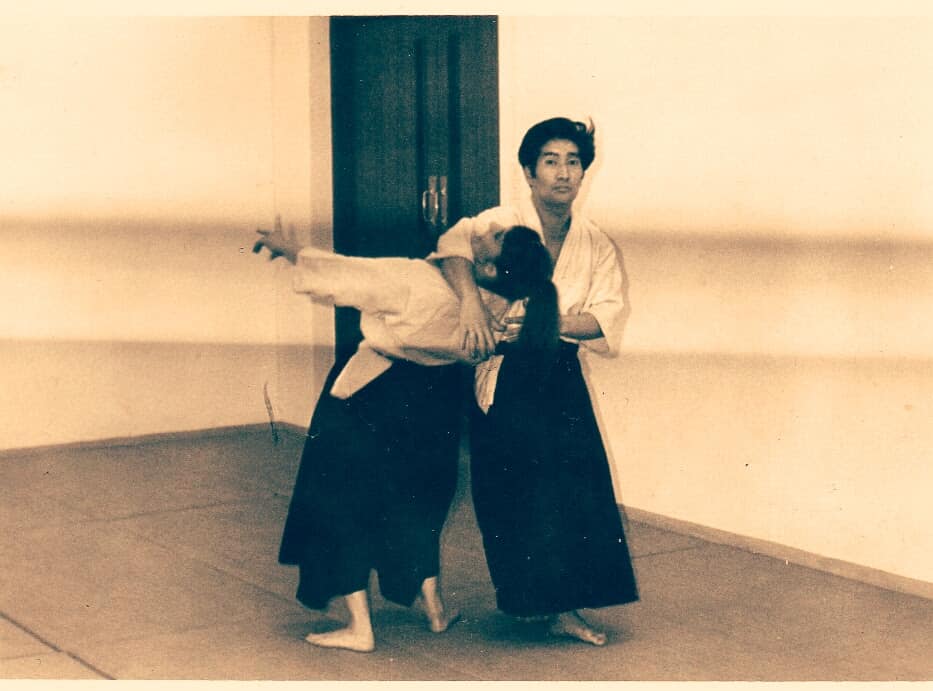AJ: People often say that in aikido you cannot measure your ability because your opponent collaborates with you.
That is not true. You can always see if your technique is good or bad at every moment of the practice. If you have to make any unnecessary effort, feel your opponent is heavy, or clash with him, it is because you are not blending completely with him. You should be able to clearly identify what is wrong with your movement, or whether you did not open wide enough. There is no need for a contest to tell if techniques work or not.
AJ: You mean your partner should attack you seriously in the training?
Yes, if I say, “Thrust at me,” he should thrust with full power; if I say, “Strike me,” he should strike hard; or he should grip me strongly. He should attack with all his strength and energy. Of course, if uke’s strength differs considerably from his partner’s he should attack with half power so nage can still learn. The founder maintained that practicing with a child was a good way to learn. Totally blending your energy with that of a child is a big challenge. Obviously some people are stronger than others, but if they injure their partner they commit an act of violence which is no longer aikido.

Some people think that such violent practice is valuable, but I think it is disgraceful. The founder said we should enjoy our training, but it depends on you how enjoyable you make it. When you can sincerely say to your partner after the class, “Thank you very much. Please train with me again,” that is the best kind of practice. If conflict arises between you and your partner and an unpleasant feeling remains after training, such training cannot lead to world peace, as the founder wanted. I want people to enjoy all my classes.
Even if someone has an injury but still wants to train they should be accommodated. I advise students to tell their partners if they have a sore elbow or wrist. They can still train earnestly with their good arm. I tell people whose knees are bad to do standing techniques rather than kneeling techniques. We should not practice recklessly.
The best training is when you care about each other. The founder advocated an open-minded approach and in Iwama you can still be touched with this feeling. He also said you can learn from anything you see, if you only want to. That is so true.
To be continued…
Source: Facebook/Aikido



